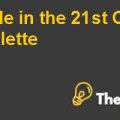
INTRODUCTION
The Ingvar Kamprad established IKEA in the year 1943. At its starting stage, the company was selling the catalog of household goods given the discount on it. Later on in the year 1947, Kamprad started to sell the furnishing goods and after six years of selling, furnishing, goods Kamprad opened its first showroom. Afterwards, IKEA started to sell its own designed furniture and charge lower prices from customers.
In 1958, IKEA opened its largest store in Almhult, Sweden and it was the largest store in all of Scandinavia. Furthermore, IKEA opened its flagship store in the year 1965 in Stockholm and that flagship store became the prototype for all the retail outlets of IKEA.
IKEA become the prominent retail store in the world and this position was achieved by the year 2002. The brand of IKEA was one of the renowned brands, it creates value for the IKEA, and it was operating in 22 countries with the 154-retail stores in those countries. In the year 1985, IKEA opened its first retail store in America and it reached to 14 stores by the year 2002. However, IKEA wanted to establish 50 stores in America before 2013.
ANALYSIS:
To identify that how IKEA would create the value for its customers, there is a need to analyze the IKEA’s value creation in terms of SWOT analysis.
SWOT Analysis:
Strengths:
IKEA’s cost effective business model is a key strength as IKEA is producing the furniture at lower cost and selling those furniture at lower prices that attract the price sensitive customers. IKEA’s distribution channel is very strong and it builds strong relationships with its suppliers and its customers.
IKEA’s product designs are modern and it provides the smooth packaging. Its brand image is strong as its stores are unique and provides all kinds of services regarding furniture. It provides a variety of products that made IKEA one stop shopping store.
Weaknesses:
IKEA is a Swedish company that is different from the American companies and customers preferred to purchase from American furniture stores. It has the difficulty to identify the Americans preferences regarding the furniture. IKEA offered product with the limited style and it provides unassembled furniture products, which is not the preferred product of America’s furniture customers.
IKEA stores are operating with the self-service environment that reduces the salespersons existence in the store for guiding the customers. On the other hand, Americans wanted to purchase from the sales person. IKEA did not provide delivery services to its customers. Durability of furniture is lower as IKEA focused on a cost leadership strategy to produce furniture.
Opportunity:
IKEA has the opportunity to target the price sensitive market such as students and middle upper class, this market segment is technology savvy customers, and they wanted to use furniture that could easily be used and move as well. IKEA has the opportunity to expand its operation into emerging markets such as Asia.
Threats:
IKEA has the threat in terms of competition from the low-end furniture retail stores such as Wall mart, Costco, as these stores are widely existing in the American furniture market. High-end furniture retail stores such as specialty stores are also the threat for the IKEA. IKEA would also expose to the risks that, different companies could adapt its business model. American customers are not willing to change easily and adopt the new culture where furniture is not considered to have the lifetime durability rather it has the lowest price.
PROBLEM STATEMENT:
The problem of the IKEA was to enter into the American furniture market where the market was distributed into different segments and customers were reluctant to buy new furniture, as they preferred the furniture those have more life. Further challenges those are identified are that Customers are reluctant to change, and How to create value for the customers.
Customers of the American furniture market had the mindset that furniture must be purchased one time and it would last for a lifetime. This mindset was not aligned with the IKEA, as their products were durable products. IKEA must change the mindset of American customers regarding the purchase of furniture in order to increase its market share.
On the other hand, American customers of furniture had the preferences that furniture must be delivered for free of cost and this was creating the problem for IKEA as free of cost delivery was not the motto of IKEA. On the other hand, IKEA’s motto was to produce furniture at lower cost and customers should purchase the furniture and take it to home on their own..................
This is just a sample partial case solution. Please place the order on the website to order your own originally done case solution.













